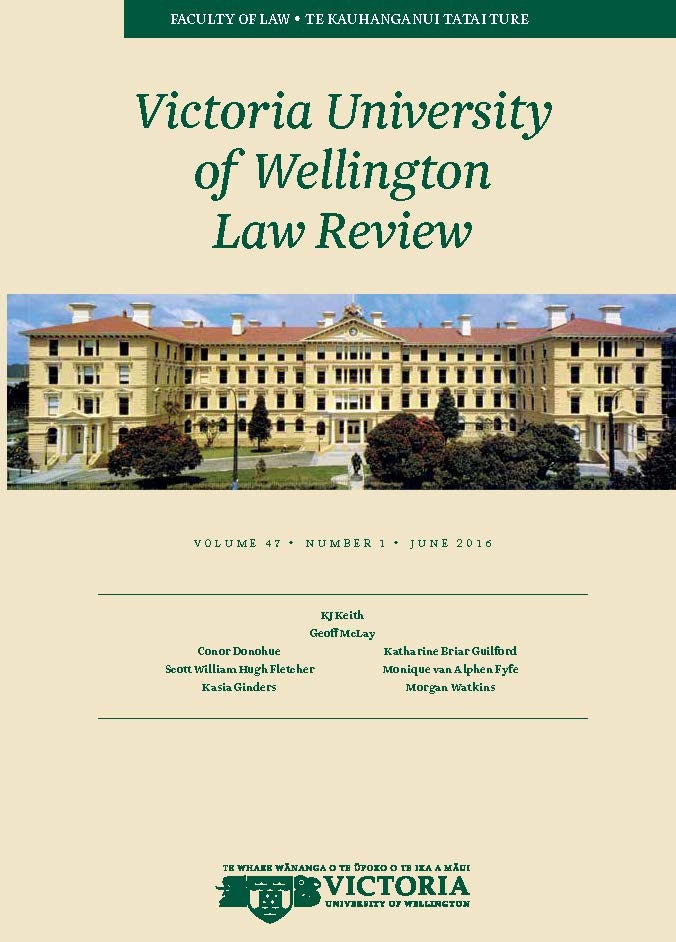Woe Unto Them That Lay Field to Field: Closer Settlement in the Early Liberal Era
DOI:
https://doi.org/10.26686/vuwlr.v47i1.4881Abstract
This article undertakes a re-examination of the origins, construction and application of the Land for Settlements legislation in the early Liberal era. The Liberal's commitment to closer settlement reveals part of the story of highly contested land policy in colonial New Zealand. Land for Settlements legislation of the 1890s, aimed at "bursting up" the great estates, was predominantly the product of settlers' ideological aspirations and two determined politicians: John Ballance and John McKenzie. When measured against the rhetoric used to promote it, however, the policy was not necessarily effective: it was complicated by practical realities and a narrow vision of New Zealand as a vigorous Arcadian paradise. When contrasted with the treatment of Māori land, yet more of the complexity of the land issue and the frailties of the actors facing it are revealed. The article concludes by proposing that Liberal policy, while flawed in execution, may have nevertheless contributed something to the consolidation of the concept of New Zealand as an agrarian ideal, a concept that remains largely intact today.
Downloads
Downloads
Published
How to Cite
Issue
Section
License
Authors retain copyright in their work published in the Victoria University of Wellington Law Review.


